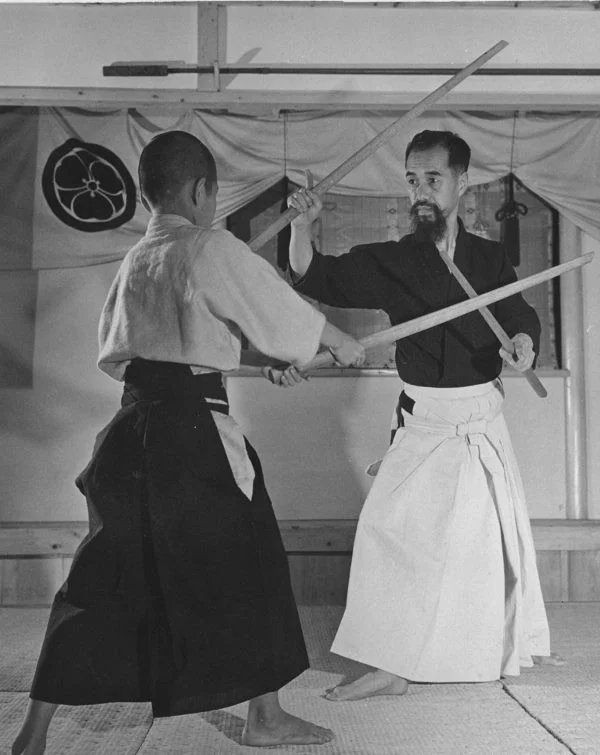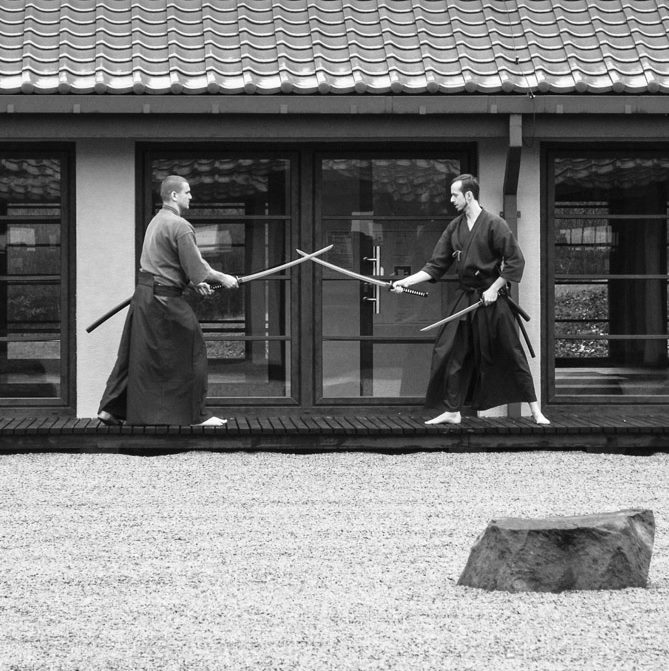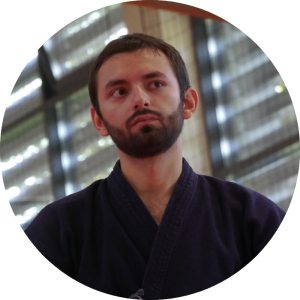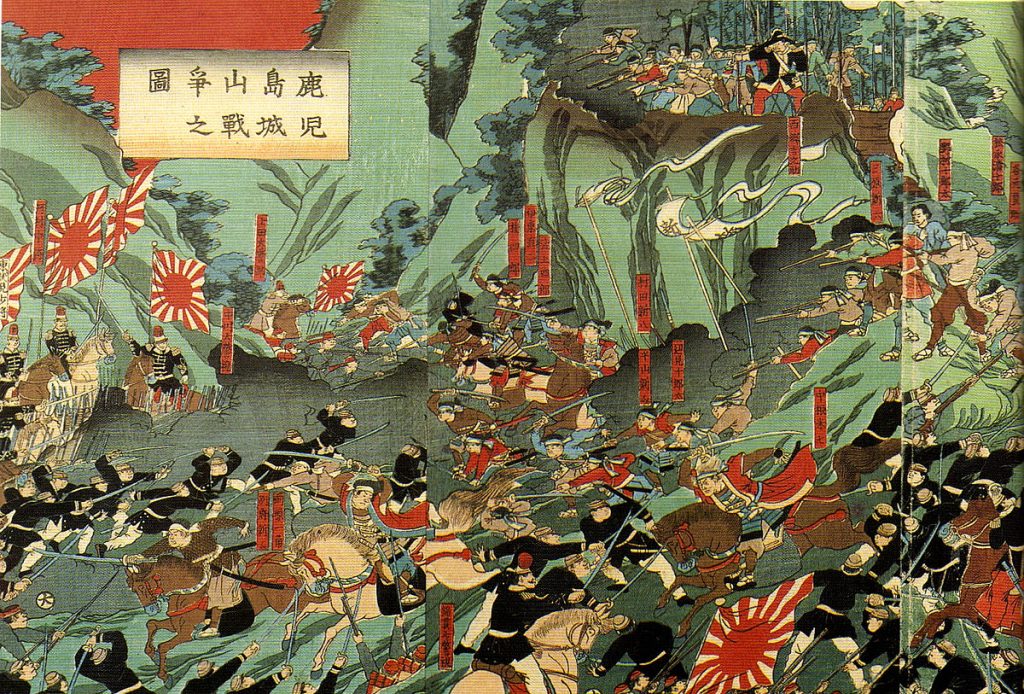Every person interested in melee weapons sooner or later asks themselves the question - what if, instead of one sword, I used two at the same time? There are plenty of examples in today's films and literature, and the fictional swordsman is presented as extremely deadly and effective. This motif is also present in many RPG games, both "paper" (e.g. Dungeons & Dragons) and computer (The Elder Scrolls series, Star Wars - Knights Of The Old Republic), where the character controlled by the player can thanks to it double damage, or attack twice as fast.
Two-sword fighting, taught as part of real martial arts, is documented historically - but it never achieved as much popularity as it might seem today. Contrary to popular culture belief, it does not automatically make a swordsman "twice as strong". Two-sword techniques were also not used on the battlefield - there the greatest role was played by a long pole weapon, or a sword and a shield that could protect against arrows. However, in certain specific situations (duels, street fights) they gave the swordsman an advantage on which his life could depend.
Although historical sources mention fighting with two long swords, these were exceptions to the rule. This setup is just too awkward to use, both blades got in the way of each other. Therefore, two short weapons were more often used, or a longer sword in the dominant hand and an auxiliary weapon in the other. This role could be played by a dagger or a second, shorter sword. This latter combination, in particular, became extremely popular over time in medieval Japan.

Daishō
Over the centuries, samurai have used several types of bladed weapons, which can be roughly divided into long - Daito and short – shoto. When worn in pairs, such a set is called daishō – which can literally be translated as “big and small.”
Originally, people took a sword with them into battle tachi and a knife Tanto tucked into his belt. During the Muromachi period (1336 – 1573) the knife was gradually replaced by a short sword – wakizashi or otherwise kodachi (lit. “small "tachi"). Then, during the Azuchi-Momoyma period (1568-1603) as well tachi fell out of use in favor of a slightly shorter and less curved one katanas, which took over the function of a long sword.
It's not entirely clear why kodachi replaced Tanto as a secondary weapon. It can be assumed that a short sword worked better as a weapon inside buildings than a knife. It is customary for a samurai to come for an audience with his lord or shogun he left katana on a stand near the entrance, and continued his visit armed only with kodachi.
As a result of progressive changes in weaponry, the custom of wearing two swords became popular among samurai, and in the Edo period (from 1603) it became a symbol of their status. An edict of the Tokugawa shogunate of 1629 ordered that samurai carry with them when performing their "official" duties daishō. Wealthier warriors increasingly ordered both swords from the same blacksmith, with matching binding details.
Same as in the single case katanas, daishō it is worn on the left side, with both blades facing upwards. The swords are tucked into the belt obiA belt used to gird traditional Japanese kimonos, yukatas and keikogi, both for men (approx. 10 cm) and women (approx. 30 cm). More or by the binding straps hakamaPants that are part of the traditional Japanese outfit. Originally, they were worn only by men, but nowadays they are also worn by women. They are also used in Japanese martial arts. More on the hips, usually kodachi is inserted lower and closer to the abdomen than katana. When drawing both swords, the warrior draws first katana, Later kodachi, when hiding, the order is reverse.

Niten Ichi Ryū - Musashi Miyamoto's school
The foundation of Japanese schools koryū was kenjutsu. However, since a samurai had access to two swords, it was natural that at least some schools taught the difficult art of using them simultaneously - known as nitoken or nito.
Definitely the most famous of the schools related to two swords is Niten Ichi Ryū. It was founded in the early Edo period (probably between 1604 and 1640) by Miyamoto Musashi, one of the most famous Japanese swordsmen. Like most samurai schools, it teaches fighting with various weapons (e.g. a stick because), but places the greatest emphasis on kenjutsu and, of course nitoken. This is manifested in the name itself, which can be translated as "school of two heavens as one". Musashi included the techniques and philosophy of his style in "The Book of Five Rings" (Go Rin no Sho), which he wrote towards the end of his life. Niten Ichi Ryu has survived to this day and is taught all over the world. It is also one of the main sources of two sword techniques today kendo.
In materials and discussions devoted to two-sword fighting, Niten Ichi Ryū basically always appears in the first place - yet this school is neither the only one nor the first one that has in its program nito. Musashi based his style on the earlier achievements of his grandfather (Miyamoto Musashi no kami Yoshimoto, creator of Enmei Ryū) and father (Miyamoto Munisai, founder of Tori Ryū). Of course, not only schools associated with the Musashi family teach nito – those that have survived to this day include Yagyu Shinkage Ryū, Shingyoto Ryū and Tatsumi Ryū. Tendo Ryu is also interesting - today known primarily for its techniques naginata, also has two fights on the program kodachi, slightly different in length.
The two-sword technique is also one of the oldest preserved koryū – Tenshin Shōden Katori Shintō-ryū.

Ryōtōjutsu - two swords in Katori Shintō-ryū
Two-sword fighting in Katori Shintō-ryū goes by the name ryōtōjutsu – where ryoto literally means “both swords”. In contrast to kenjutsu Whether bōjutsu, ryōtōjutsu belongs to ura-vase – secret techniques that are passed on only to students who have obtained master degrees after many years of practice in using the sword and other weapons at the level omote.
IN school program there are four executioner (movement sequences) dedicated to ryōtō. Their names with translations and the names of the first ones are listed below kamae (position, guard):
– eigetsu no tachi (niō no kurai) | 【永月之太刀】 (二王之位) | Eternal Moon Sword (two kings position) |
– suigetsu no tachi (tenchi no kurai) | 【水月之太刀】 (天地之位) | sword of the moon reflected in the water (position of heaven and earth/ position of the entire universe) |
– isonami no tachi (fūha no kurai) | 【磯浪之太刀】 (風葉之位) | coastal wave sword/ sword of a wave hitting the shore (position of leaves in the wind) |
– murakumo no tachi (sasu no kurai) | 【村雲之太刀】 (佐寿之位) | sword of clouds above the village/ cloud village sword (life-saving position) |
Kata are practiced in pairs, with the less advanced partner (kirikomi) uses two swords - together with the standard one bokken wooden one is used kodachi with length 1 Shaku 8 sun, i.e. about 55cm. More advanced partner (uke) uses one sword / bokken.

Advantages and disadvantages of ryōtō
The biggest advantage of using two swords is greater flexibility. Depending on the situation, both weapons can be used for attack or defense. When one sword controls the opponent's weapon, the other can attack unhindered. You can also parry by crossing both blades, and if positioned correctly, it is possible to jam your opponent's sword, completely immobilizing him. Using a short sword forces you to shorten the distance while applying more pressure.
However, the advantages do not come for free. You can't count on using two swords efficiently without first mastering them kenjutsu – technical issues and shortcomings will only become more apparent when moving to ryōto. Making a good cut with one hand is more difficult and will not be as strong. Both hands must perform other activities at the same time - so it is necessary to practice good coordination. Without it, the swords will hinder each other instead of complementing each other.




